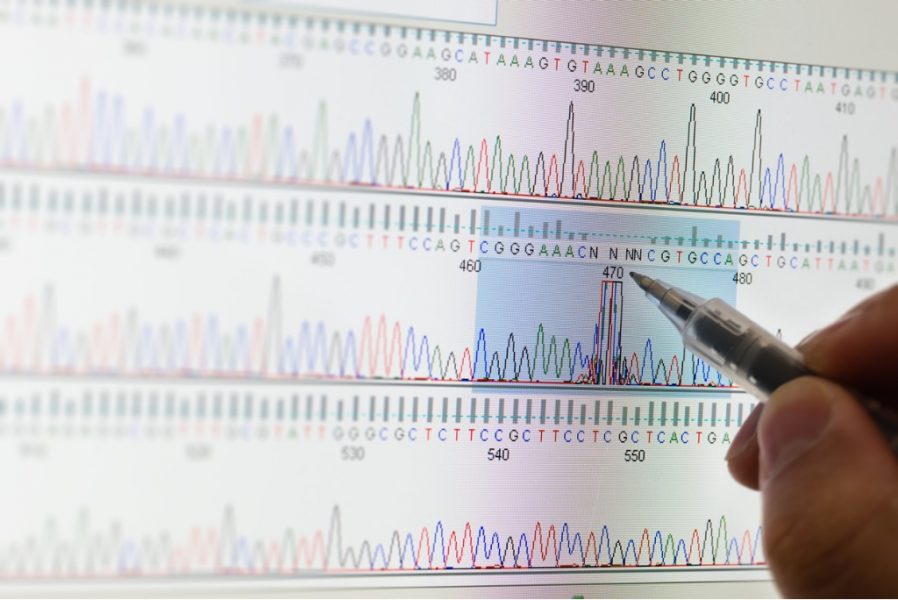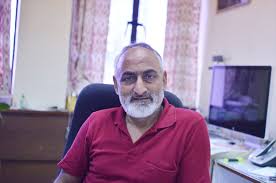
No evidence yet to show coronavirus less virulent in India
Though the novel coronavirus which originated in China has mutated in India, there is still no evidence to indicate that it is less virulent here.

Though the novel coronavirus which originated in China has mutated in India, there is still no evidence to indicate that it is less virulent here.
“While we are seeing a relatively lower level of mortality and symptoms rate in India, there is no explanation at the moment for this,” the director of the Hyderabad-based Centre for Cellular and Molecular Biology (CCMB) Dr. Rakesh Mishra told The Federal.
“Over the coming few weeks, we will be able to study at least 300 virus isolates and this information will help us to make definite conclusions about the behaviour of this virus,” the scientist said.

The bioinformatic analysis of the sequence data on Indian isolates collected so far indicates Chinese and European routes of entry of the virus and also indicates no major mutational changes that may necessitate drastically different approaches of vaccine or drug from what is already being tried.
“It is, however, premature to make a final call based on these early indications,’’ Mishra said.
Genome sequencing
As researchers across the world are racing against time to find an immediate cure for the COVID-19 disease and develop a vaccine, the scientists at CCMB are working on genome sequencing of the coronavirus isolates to understand its evolution, rate of mutation and its spread.
Related news: Privacy aside, genome sequencing project has serious implications
Genome sequencing needs a very large number of samples for study. For this purpose, the National Institute of Virology (NIV), Pune, has been asked to give viruses that have been isolated from patients. This will help scientists to cover the whole country to get a bigger, clearer picture and establish the family tree of the virus.
“The genome sequencing will help us understand how dynamic the virus is and how fast it mutates and what are the future aspects of it,” Dr. Mishra said.
How does it work?
Genome sequencing is figuring out the order of the arrangement of chemical alphabets in an organism. The human genome, for instance, is made up of over 3 billion of these genetic letters.
The DNA sequencing on a large scale is done by high-tech machines. Just like how our eye scan a sequence of letters to read a sentence, these machines “read” a sequence of DNA bases.
“The purpose of this project is to understand the mutation rate in the virus, its potential path for spread and if there are any unique features of the isolates that we have in India,” the scientist said.
The large scale genome sequencing will be useful in developing a suitable drugs and vaccines because it will enable scientists to understand which part of the virus, if any, mutating faster or slower. This will be helpful in determining the potential target in the viral genome for vaccine and drug.
CCMB is one of the premier CSIR organisations engaged in research in frontier areas of modern biology. It has teamed up with the New Delhi-based Institute of Genomics and Integrative Biology (IGIB) for the genome sequencing project.
Related news: Govt unveils genome sequencing, promises disease prediction, prevention
The CCMB scientists have also started growing coronavirus in the lab in larger quantities to “use it for serological testing, to study its growth in the cells and for new interventions.”
Molecular surveillance
Meanwhile, the Council of Scientific and Industrial Research (CSIR), having over 38 research institutions under its umbrella, is working with Information Technology majors such as Intel and TCS to develop a digital and molecular surveillance platform for monitoring the spread of coronavirus.
The data shared from various agencies and linking with sources like ‘Aarogya Setu’ platform will help in the management and control of the disease spread.
The CSIR labs are already in discussions with public and private sector giants like Reliance, Tata, Cipla, Cadila, BHEL and BEL for PPEs, hospital assistive devices, repurposing of drugs, coronavirus therapy, vaccine development, electrostatic spray, ventilator and oxygen enrichment units.
With most of the reagents being imported now, the CSIR along with private sector companies is working on indigenisation of components, devices, and equipment.
This is a coordinated effort for indigenisation of components, reagents, chemicals, and enzymes required for testing, etc. of the novel coronavirus. “We are working closely with TCS and Intel and others in developing a digital platform which will help in surveillance of corona outbreak in the country,” Dr. Mishra said.
Related news: After return of migrants, Odisha records 20 COVID-19 cases in single-day spike
The CCMB director said that the spread of the coronavirus was not linked to the weather conditions. “Social distancing and sanitisation are the best ways to escape from the clutches of COVID-19,” he said.
Excerpts from the interview with Dr. Mishra:
Q: What is the methodology involved in the genome sequencing of the novel coronavirus? What is the objective of this project?
A: To sequence the coronavirus genome, we isolate the viral RNA from the patient sample, convert into DNA and then amplify before making a library for sequencing. The purpose of this activity is to understand the mutation rate in the virus, its potential path for spread, and to see if there are any unique features of the isolates that we have in India.
Q: How will genome sequencing help in understanding the nature of the virus and in finding suitable drug and vaccine?
A: Large scale sequencing will be useful in both suitable drug and vaccine development, as it will allow us to understand which part of the virus, if any, mutating faster or slower and that will be helpful in determining the potential target in the viral genome for vaccine and drug.
Q: How do you grow coronavirus in a lab? What does it involve?
A: Growing the virus in the lab is by isolating the virus from the patient and adding it to cell culture system in which appropriate cell is growing. The virus then infects the cell and makes more copies of itself and eventually kills the cell and then we detect this virus in culture and infect the fresh batch of cells, this is how the virus is grown in the cell. It is obvious that it requires very safe laboratory condition with Biosafety Level-3 (BSL-3) so that virus doesn’t do any harm to individuals.
Q: Is CCMB venturing into research for coronavirus vaccine candidates?
A: CCMB is growing the virus which can be used for the vaccine as inactivated virus vaccine and also CCMB is expressing several proteins of this virus in different systems which can be used as a potential vaccine candidate.
We will be interacting with different companies that have expertise in vaccine production in the near future.
Q: Do you think there is a need to shift the testing strategy in India?
A: There is no rationale for shifting the strategy to antibody testing from the currently used RT-PCR method.
Antibody-based methods do not detect the early infection stage and can give a positive when the person has recovered and the virus is absent. However, it is very useful in knowing the fraction of the population that was ever infected by the virus, and therefore it is very useful in taking strategic decisions regarding surveillance and control.
Q: CCMB is now serving as a testing facility as well. How many samples are being tested every day at the institute?
A: CCMB has carried out several thousand tests till now and we can test more than 300 tests every day but if we do pooling of the testing, provided the samples come from low infection area.
Q: What role do you envisage for India in terms of vaccine research and manufacturing? Does India have the wherewithal in terms of infrastructure and manufacturing capacities to supply vaccine to the rest of the world? What is the most optimistic timeframe to expect the vaccine to hit the market?
A: India is one of the major vaccine suppliers for the whole world and therefore I am very hopeful that we will be front-runners in the area of vaccine for COVID-19 as well. A realistic timeframe for vaccine is several months, maybe the beginning of next year.
Q: Has coronavirus mutated in India? Is the Indian version of the strain less virulent? How do we explain the relatively lower level of infection and mortality rates in India?
A: As is expected, the virus has mutated in India because it keeps mutating continuously. However, there is no evidence to indicate that it is less or more virulent. Though we are seeing relatively lower level of mortality and symptoms rate in India, there is no explanation at the moment for this observation.
Q: What is the impact of temperature on coronavirus? Some argue that the virus may not be able to survive in hot tropical weather like India’s.
A: Impact of temperature on Coronavirus is like for any other virus. The virus dies at very high temperature but it does not mean that the spread of the virus will have any difference in summer as compared to a colder climate. There are many other factors that contribute to these processes.

